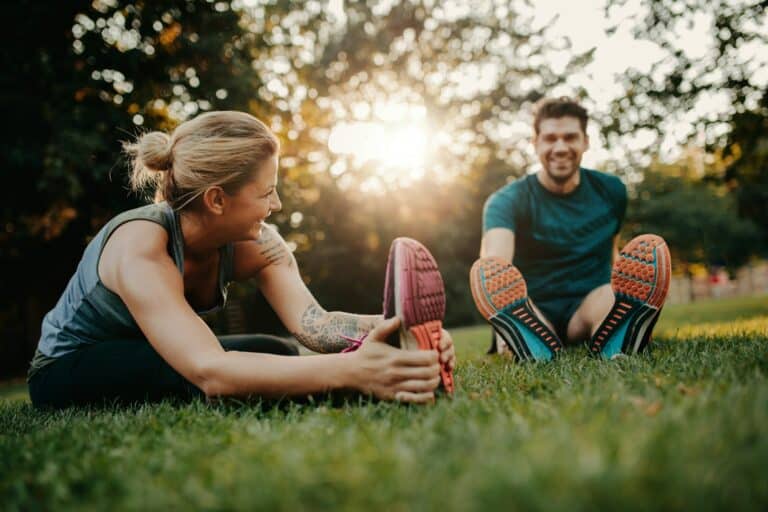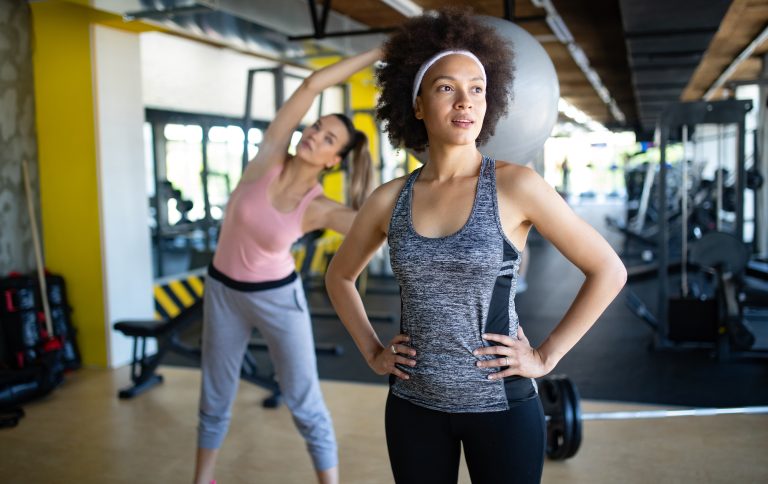Weight lifting isn’t just for body builders. In fact, most adults, especially after middle age, can benefit from weight training. Why? Because while it is true that most of us gain wisdom with age it is also true that we lose muscle and contend with the impact of a slower metabolism. When paired with cardio exercise weight lifting can improve bone density and build a more healthy lean muscle to fat ratio. More muscle means your metabolism will be more efficient and your clothes will fit better, too. If you are thinking about weight training you might also be wondering about some of the associated accessories. Below is a brief primer on some of the most popular equipment.
Weight Belt
 Also called a weightlifting belt this tool offers protection for your back and spine while lifting, particularly power lifting. More important than this tool, however, is your attention to form. Be sure to lift with your legs rather than your back as your first line of defense against injury. Also, be sure your feet are planted firmly on the floor and keep your spine in a neutral position as you lift. Keep your awareness in your body as you lift so that you immediately notice and correct poor form and/or stop if you feel undue pain or discomfort.
Also called a weightlifting belt this tool offers protection for your back and spine while lifting, particularly power lifting. More important than this tool, however, is your attention to form. Be sure to lift with your legs rather than your back as your first line of defense against injury. Also, be sure your feet are planted firmly on the floor and keep your spine in a neutral position as you lift. Keep your awareness in your body as you lift so that you immediately notice and correct poor form and/or stop if you feel undue pain or discomfort.
Griping Gloves
 Griping gloves or weightlifting gloves have many fans and foes. Fans argue that the gloves help the user get a surer grip and avoid calluses. Foes counter that the grip may be sure but the form forced on the wrist by the glove is wrong. To use or not to use gripping gloves may come down to personal preference or advice from your trainer. The gloves come in a variety of fabrics and styles. If you’d like to experiment be sure to get gloves that are sized right (too large gloves will definitely not help your grip) and compare the difference you feel with and without them.
Griping gloves or weightlifting gloves have many fans and foes. Fans argue that the gloves help the user get a surer grip and avoid calluses. Foes counter that the grip may be sure but the form forced on the wrist by the glove is wrong. To use or not to use gripping gloves may come down to personal preference or advice from your trainer. The gloves come in a variety of fabrics and styles. If you’d like to experiment be sure to get gloves that are sized right (too large gloves will definitely not help your grip) and compare the difference you feel with and without them.
Straps
 Weightlifting straps look somewhat like belts, except smaller (about 12 inches). If you are looking for a weight lifting accessory that can help you keep a non-slip grip on heavy weights, these might be just the ticket. These tools are used to support your grip on the weight by attaching one end of the strap to the wrist and the other to the weight. If you use straps, be sure to check them regularly for wear; a snapped strap can result in injury.
Weightlifting straps look somewhat like belts, except smaller (about 12 inches). If you are looking for a weight lifting accessory that can help you keep a non-slip grip on heavy weights, these might be just the ticket. These tools are used to support your grip on the weight by attaching one end of the strap to the wrist and the other to the weight. If you use straps, be sure to check them regularly for wear; a snapped strap can result in injury.
Wrist Wraps
Wrist wraps can help you keep your wrist straight when pressing during weight lifting. The wrap, when worn appropriately, can prevent injury by providing supportive alignment. Wrap tightly, but not so tightly that you feel numb, to give your wrist the best support. Like most weight lifting accessories wrist wraps come in a variety of fabrics and styles. Try a few to find the one that works best for you.
Knee Wraps
 I was saved by a knee wrap. The orthopedist had me fitted for one after my knee cap decided to go wandering. Use a knee wrap if you have knee pain or need extra support for power lifting or even just squats. Again, there are countless varieties so feel free to experiment. Fit counts so be sure that your wrap is firm, snug and provides adequate coverage.
I was saved by a knee wrap. The orthopedist had me fitted for one after my knee cap decided to go wandering. Use a knee wrap if you have knee pain or need extra support for power lifting or even just squats. Again, there are countless varieties so feel free to experiment. Fit counts so be sure that your wrap is firm, snug and provides adequate coverage.
If you are considering weight training but you don’t have any equipment, don’t let that be a deterrent. Better to head for the weights with caution and let experience tell you what you need than to show up at the gym with a bag of useless gear.
Photos courtesy of amazon.com
